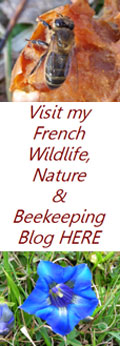Black winged Kite

Black winged or Black Shouldered Kite (Elanus
caeruleus) Élanion blanc
Global Overview
The Black-winged Kite is a species primarily of open land and
semi-deserts in sub-Saharan
Appearance.
It is a long-winged raptor that is predominantly grey or white with black shoulder patches, wing tips and eye stripe. The wings which are long and falcon like extend beyond the tail when perched. In flight the tail is short and square – not forked as is typical of other kites in the genus Milvus, (e.g. Black and Red kite). Both sexes have the same plumage.
Length:
31-35 cm
Wingspan:
75-87 cm
Weight:
197-343 g
Lifespan:
No reliable statistics but 15 to 20 years is likely to be typical.
Behaviour,
Habitat and Diet
This Kite
is a bird of open habitats, semi desert, steppes and agricultural areas.
It is not found in dense forests or heavily wooded areas. Although this
is a non migratory species they do have a very erratic behaviour,
sometimes moving over very long distances. This erratic behaviour can
occur at any time of the year but April/ May is most likely in France
and may be connected with food shortages .Diet is made up mainly of
small mammals, (85%+ in France), small birds, reptiles and insects.
Smaller prey is eaten in flight with larger prey taken to a perch such
as a dead branch, electricity or telephone pole etc Here when perched
they often “fidget” with their wings and tail as if trying to balance.
Larger prey may be dismembered on the ground. Hunting flight mixes the
slow passes of a Harrier with the more rapid movements of a Kestrel and
includes hovering like a Kestrel but with less rapid wing beats. They
are not usually very vocal outside of the breeding season and any calls
are quite muted, soft whistles and high squeals. Communal roosts,
sometimes very large, are quite common, (as with other Kites and
Harriers), but in
Reproduction.
Nesting usually
starts early in
The nest is built
on a branch in a high tree and a new nest is built each year even though the
same tree may be used from one year to another. Although the male and the
female take part in the nest building there is a tendency for the male to
collect suitable material and for the female to actually construct the nest.
Three or four eggs are laid and incubated for about 26 days mainly by the
female. Once again we find that, as with other raptors, it is the female
that usually stays with the chicks and feeds them in the initial period when
they are hatched with the male hunting and providing the food for all.
Fledging takes place at about 30 to 35 days from birth.
Habitat loss and changes associated with intensive agriculture, (cutting copses, removal of hedges, loss of open grassland or heath etc.). In the case of autumn reproduction, common in this species, hunting could be an additional source of disturbance and of course the dreaded wind turbines.


